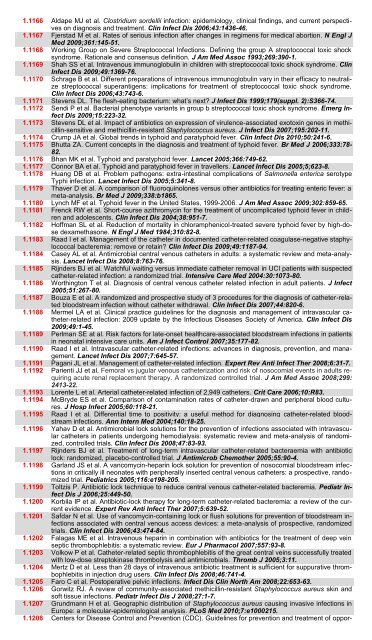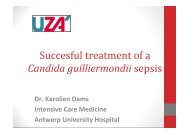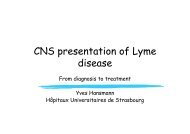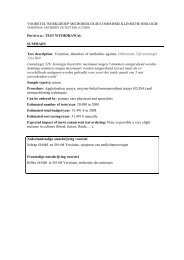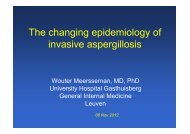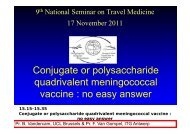TABLE 39A LIST OF PUBLICATIONS REFERRED TO IN THE ...
TABLE 39A LIST OF PUBLICATIONS REFERRED TO IN THE ...
TABLE 39A LIST OF PUBLICATIONS REFERRED TO IN THE ...
Create successful ePaper yourself
Turn your PDF publications into a flip-book with our unique Google optimized e-Paper software.
1.1166 Aldape MJ et al. Clostridium sordellii infection: epidemiology, clinical findings, and current perspectives<br />
on diagnosis and treatment. Clin Infect Dis 2006;43:1436-46.<br />
1.1167 Fjerstad M et al. Rates of serious infection after changes in regimens for medical abortion. N Engl J<br />
Med 2009;361:145-51.<br />
1.1168 Working Group on Severe Streptococcal Infections. Defining the group A streptococcal toxic shock<br />
syndrome. Rationale and consensus definition. J Am Med Assoc 1993;269:390-1.<br />
1.1169 Shah SS et al. Intravenous immunoglobulin in children with streptococcal toxic shock syndrome. Clin<br />
Infect Dis 2009;49:1369-76.<br />
1.1170 Schrage B et al. Different preparations of intravenous immunoglobulin vary in their efficacy to neutralize<br />
streptococcal superantigens: implications for treatment of streptococcal toxic shock syndrome.<br />
Clin Infect Dis 2006;43:743-6.<br />
1.1171 Stevens DL. The flesh-eating bacterium: what‘s next? J Infect Dis 1999;179(suppl. 2):S366-74.<br />
1.1172 Sendi P et al. Bacterial phenotype variants in group b streptococcal toxic shock syndrome. Emerg Infect<br />
Dis 2009;15:223-32.<br />
1.1173 Stevens DL et al. Impact of antibiotics on expression of virulence-associated exotoxin genes in methicillin-sensitive<br />
and methicillin-resistant Staphylococcus aureus. J Infect Dis 2007;195:202-11.<br />
1.1174 Crump JA et al. Global trends in typhoid and paratyphoid fever. Clin Infect Dis 2010;50:241-6.<br />
1.1175 Bhutta ZA. Current concepts in the diagnosis and treatment of typhoid fever. Br Med J 2006;333:78-<br />
82.<br />
1.1176 Bhan MK et al. Typhoid and paratyphoid fever. Lancet 2005;366:749-62.<br />
1.1177 Connor BA et al. Typhoid and paratyphoid fever in travellers. Lancet Infect Dis 2005;5;623-8.<br />
1.1178 Huang DB et al. Problem pathogens: extra-intestinal complications of Salmonella enterica serotype<br />
Typhi infection. Lancet Infect Dis 2005;5:341-8.<br />
1.1179 Thaver D et al. A comparison of fluoroquinolones versus other antibiotics for treating enteric fever: a<br />
meta-analysis. Br Med J 2009;338:b1865.<br />
1.1180 Lynch MF et al. Typhoid fever in the United States, 1999-2006. J Am Med Assoc 2009;302:859-65.<br />
1.1181 Frenck RW et al. Short-course azithromycin for the treatment of uncomplicated typhoid fever in children<br />
and adolescents. Clin Infect Dis 2004;38:951-7.<br />
1.1182 Hoffman SL et al. Reduction of mortality in chloramphenicol-treated severe typhoid fever by high-dose<br />
dexamethasone. N Engl J Med 1984;310:82-8.<br />
1.1183 Raad I et al. Management of the catheter in documented catheter-related coagulase-negative staphylococcal<br />
bacteremia: remove or retain? Clin Infect Dis 2009;49:1187-94.<br />
1.1184 Casey AL et al. Antimicrobial central venous catheters in adults: a systematic review and meta-analysis.<br />
Lancet Infect Dis 2008;8:763-76.<br />
1.1185 Rijnders BJ et al. Watchful waiting versus immediate catheter removal in UCI patients with suspected<br />
catheter-related infection: a randomized trial. Intensive Care Med 2004:30:1073-80.<br />
1.1186 Worthington T et al. Diagnosis of central venous catheter related infection in adult patients. J Infect<br />
2005;51:267-80.<br />
1.1187 Bouza E et al. A randomized and prospective study of 3 procedures for the diagnosis of catheter-related<br />
bloodstream infection without catheter withdrawal. Clin Infect Dis 2007;44:820-6.<br />
1.1188 Mermel LA et al. Clinical practice guidelines for the diagnosis and management of intravascular catheter-related<br />
infection: 2009 update by the Infectious Diseases Society of America. Clin Infect Dis<br />
2009;49:1-45.<br />
1.1189 Perlman SE at al. Risk factors for late-onset healthcare-associated bloodstream infections in patients<br />
in neonatal intensive care units. Am J Infect Control 2007;35:177-82.<br />
1.1190 Raad I et al. Intravascular catheter-related infections: advances in diagnosis, prevention, and management.<br />
Lancet Infect Dis 2007;7:645-57.<br />
1.1191 Pagani JL et al. Management of catheter-related infection. Expert Rev Anti Infect Ther 2008;6:31-7.<br />
1.1192 Parienti JJ et al. Femoral vs jugular venous catheterization and risk of nosocomial events in adults requiring<br />
acute renal replacement therapy. A randomized controlled trial. J Am Med Assoc 2008;299:<br />
2413-22.<br />
1.1193 Lorente L et al. Arterial catheter-related infection of 2,949 catheters. Crit Care 2006;10:R83.<br />
1.1194 McBryde ES et al. Comparison of contamination rates of catheter-drawn and peripheral blood cultures.<br />
J Hosp Infect 2005;60:118-21.<br />
1.1195 Raad I et al. Differential time to positivity: a useful method for diagnosing catheter-related bloodstream<br />
infections. Ann Intern Med 2004;140:18-25.<br />
1.1196 Yahav D et al. Antimicrobial lock solutions for the prevention of infections associated with intravascular<br />
catheters in patients undergoing hemodialysis: systematic review and meta-analysis of randomized,<br />
controlled trials. Clin Infect Dis 2008;47:83-93.<br />
1.1197 Rijnders BJ et al. Treatment of long-term intravascular catheter-related bacteraemia with antibiotic<br />
lock: randomized, placebo-controlled trial. J Antimicrob Chemother 2005;55:90-4.<br />
1.1198 Garland JS et al. A vancomycin-heparin lock solution for prevention of nosocomial bloodstream infections<br />
in critically ill neonates with peripherally inserted central venous catheters: a prospective, randomized<br />
trial. Pediatrics 2005;116:e198-205.<br />
1.1199 Toltzis P. Antibiotic lock technique to reduce central venous catheter-related bacteremia. Pediatr Infect<br />
Dis J 2006;25:449-50.<br />
1.1200 Korbila IP et al. Antibiotic-lock therapy for long-term catheter-related bacteremia: a review of the current<br />
evidence. Expert Rev Anti Infect Ther 2007;5:639-52.<br />
1.1201 Safdar N et al. Use of vancomycin-containing lock or flush solutions for prevention of bloodstream infections<br />
associated with central venous access devices: a meta-analysis of prospective, randomized<br />
trials. Clin Infect Dis 2006;43:474-84.<br />
1.1202 Falagas ME et al. Intravenous heparin in combination with antibiotics for the treatment of deep vein<br />
septic thrombophlebitis: a systematic review. Eur J Pharmacol 2007;557:93-8.<br />
1.1203 Volkow P et al. Catheter-related septic thrombophlebitis of the great central veins successfully treated<br />
with low-dose streptokinase thrombolysis and antimicrobials. Thromb J 2005;3:11.<br />
1.1204 Mertz D et al. Less than 28 days of intravenous antibiotic treatment is sufficient for suppurative thrombophlebitis<br />
in injection drug users. Clin Infect Dis 2008;46:741-4.<br />
1.1205 Faro C et al. Postoperative pelvic infections. Infect Dis Clin North Am 2008;22:653-63.<br />
1.1206 Gorwitz RJ. A review of community-associated methicillin-resistant Staphylococcus aureus skin and<br />
soft tissue infections. Pediatr Infect Dis J 2008;27:1-7.<br />
1.1207 Grundmann H et al. Geographic distribution of Staphylococcus aureus causing invasive infections in<br />
Europe: a molecular-epidemiological analysis. PLoS Med 2010;7:e1000215.<br />
1.1208 Centers for Disease Control and Prevention (CDC). Guidelines for prevention and treatment of oppor-


